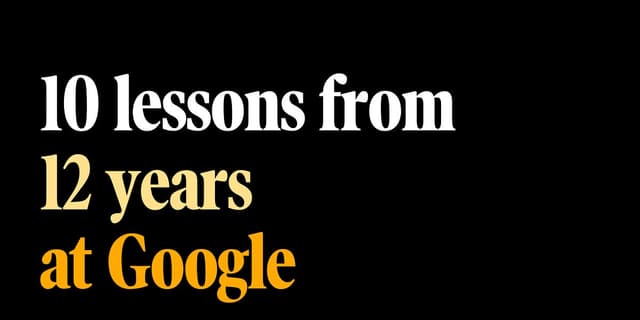Lesson 1: Embrace lifelong learning
One of the most powerful ways I've found to learn is by writing about what I'm learning.
Lesson 2: Put users front and center
Putting users front and center means starting with empathy. It involves deeply understanding the problems users face and the impact our work can have on their lives.
From ideation to design to implementation, every choice should be guided by the question: "How does this benefit our users?"
Lesson 3: Collaborate to amplify impact
Collaborating effectively means being generous with your skills, knowledge, and insights. It involves actively seeking out opportunities to share what you know and learn from others, regardless of their level of seniority.
Lesson 4: Just start. You can edit a bad page, not a blank one.
"First do it, then do it right, then do it better."
But the reality is, the perfect solution rarely emerges fully formed. It's through the process of doing that we learn and improve.
Lesson 5: Master the art of influence
Mastering the art of influence starts with empathy. Seek to understand the perspectives, motivations, and concerns of those around you. Listen actively and ask questions to gain a deeper understanding of their needs and goals.
Tailor your communication style to your audience.
Building influence also involves establishing trust and credibility. Follow through on your commitments, admit when you're wrong, and give credit where it's due.
Thinking strategically means understanding the full context in which your work operates. It involves considering not just the immediate problem at hand but also the broader systems, stakeholders, and industry trends that shape your environment.
Thinking strategically also means aligning your efforts with the overarching goals and priorities of your organization. Understand how your work fits into the bigger picture and make decisions that drive the company forward.
When faced with a challenge, break it down into manageable pieces. Identify the specific actions you can take to move forward, no matter how small. Prioritize based on impact and feasibility, and focus your energy on the things you can directly influence.
Focusing on what you can control also means letting go of perfectionism and embracing adaptability. Recognize that there will always be factors outside your control, and that's okay. What matters is how you navigate them with resilience and grace.
communication is a superpower for engineers. The ability to articulate complex ideas in a clear, concise, and compelling way is what sets apart truly effective technical leaders.
Building bridges starts with curiosity and empathy. Seek to understand the perspectives, needs, and constraints of those in other roles and departments. Put yourself in their shoes and look for ways to align your efforts towards shared goals.
Look for opportunities to collaborate on cross-functional projects that create value for the entire
Prioritize activities that recharge your energy and bring you joy. Whether it's spending time with loved ones, pursuing hobbies, or simply taking a walk in nature, make space for the things that nourish your soul.
It means knowing when to say no to projects or commitments that don't align with your values or goals.
Recognize that happy, healthy teams are the foundation of sustainable success.
